Don't fight the Fed: The case for Gold
As a banking turmoil has unleashed across two continents, investors have been piling into gold and gold equities again. The precious metal regaining its lustre amid current market uncertainty.
Gold mining companies surged early last week as gold traded around a one-year high, bucking the trend in wider Australian markets.
Gold’s safe haven appeal is back in force, as investors flocked to the yellow metal following the Silicon Valley Bank (SVB) collapse and Credit Suisse bail out, pushing gold prices up.
Chart 1: Gold benefitting from
financial instability
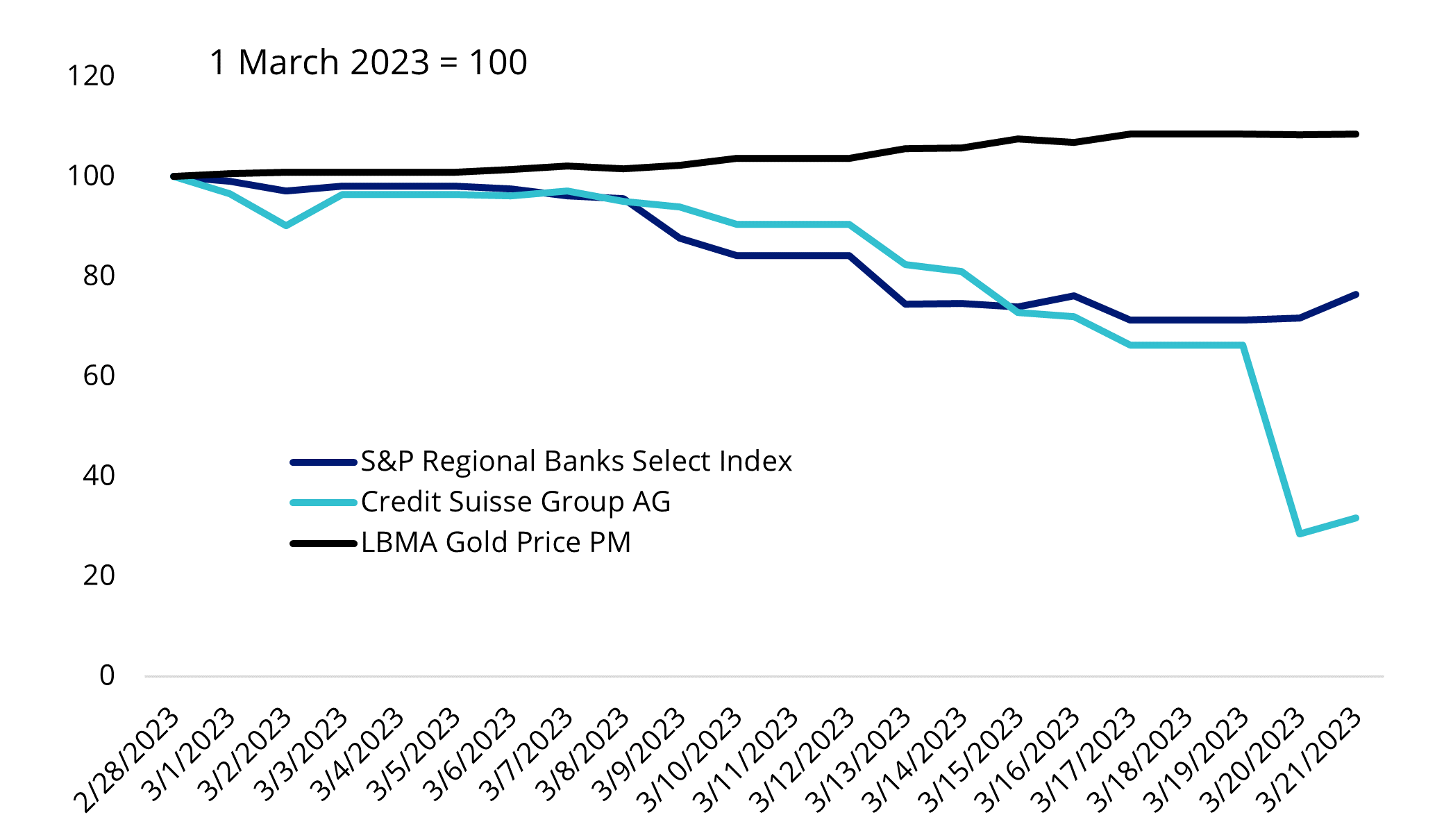
Source: Morningstar, Macquarie Strategy, to COB 21 March 2023
Gold prices have also been boosted from the big drop in US government bond yields and a decline in the US dollar (as measured by the DXY Index). Lower bond yields reduce the opportunity cost of holding a metal that pays no income. A weaker dollar lifts the price of commodities that are denominated in the US currency.
Chart 2: Gold prices have also been boosted by weakness in the USD (DXY)
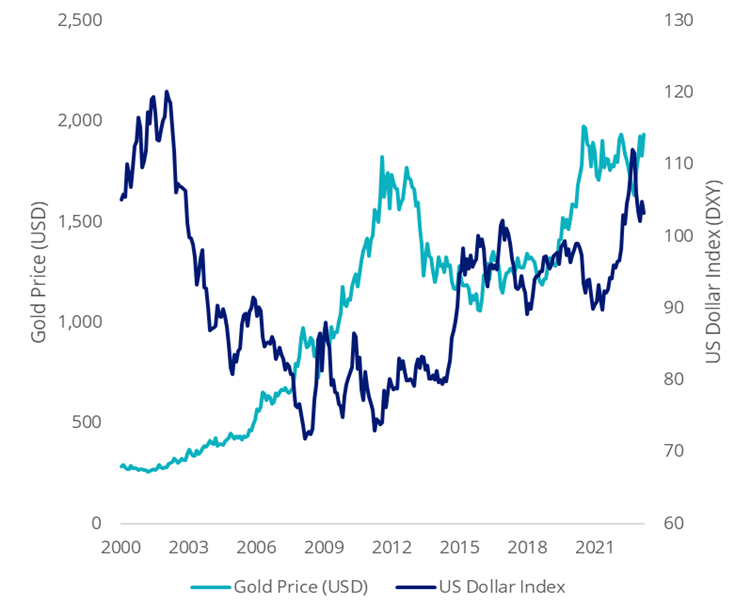
Source: Bloomberg.
The Fed indicates that rate cuts are not in scope until 2024, contrary to what markets believe following the the SVB fallout. Our view is gold would be a beneficiary if the Federal Reserve (Fed) paused interest rate increases in response to problems in the banking system.
The World Gold Council recently said, though not without risks, a good case for gold remains in place for 2023 driven by: elevated geopolitical risk; a developed market economic slowdown; a peak in interest rates, and risks to equity valuations. In addition, continued central bank buying can’t be ruled out.
Central bank buying in 2022 was the highest on record.
Chart 3: Central bank demand for gold rose in 2022
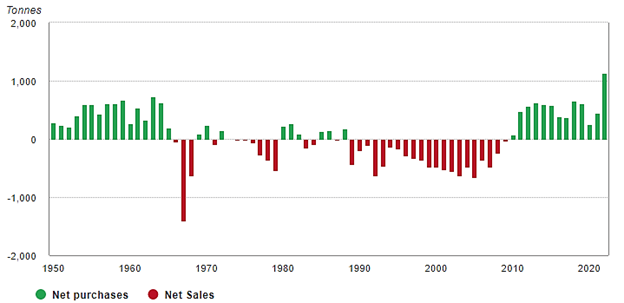
Source: World Gold Council
It’s not just the gold price that has benefited from the current crisis in confidence.
Gold miners
Gold miners stand to benefit from the current instability as their balance sheets remain strong and they typically rise more than the gold price in an upswing. If inflation remains elevated for several years, the financial system will not be able to return to normal for an extended period. This could create a favourable environment for gold miners.
As gold equities have been underperforming the gold price over the past few years, gold equities remain historically cheap relative to the price of bullion.
Gold miners tend to outperform gold bullion when the price rises, and underperform when the gold price falls. This has been true this month, with VanEck’s Gold Miners ETF (ASX:GDF) returning 14.04% so far in March, compared to the 8.46% rise of the LBMA PM Gold Price.1 (All returns as at 20 March 2023, source LBMA, Morningstar.)
ETFs are an efficient way for investors to access gold investing.
Accessing gold through ETFs
VanEck’s global leadership in gold investing stretches more than 50 years, encompassing gold equites and bullion across ETFs and active funds.
Two ETFs for portfolio considerations:
- NUGG – accessing physical gold, that ‘delivers’
- GDX – investing in a diversified portfolio of gold mining companies
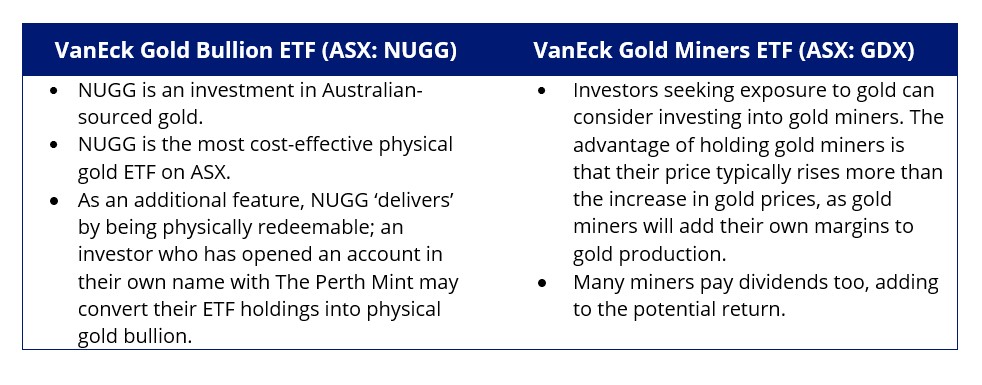


Below we outline the risks of each type of exposure to gold, owning gold bullion and owning gold miners:
Differences between gold miners and bullion
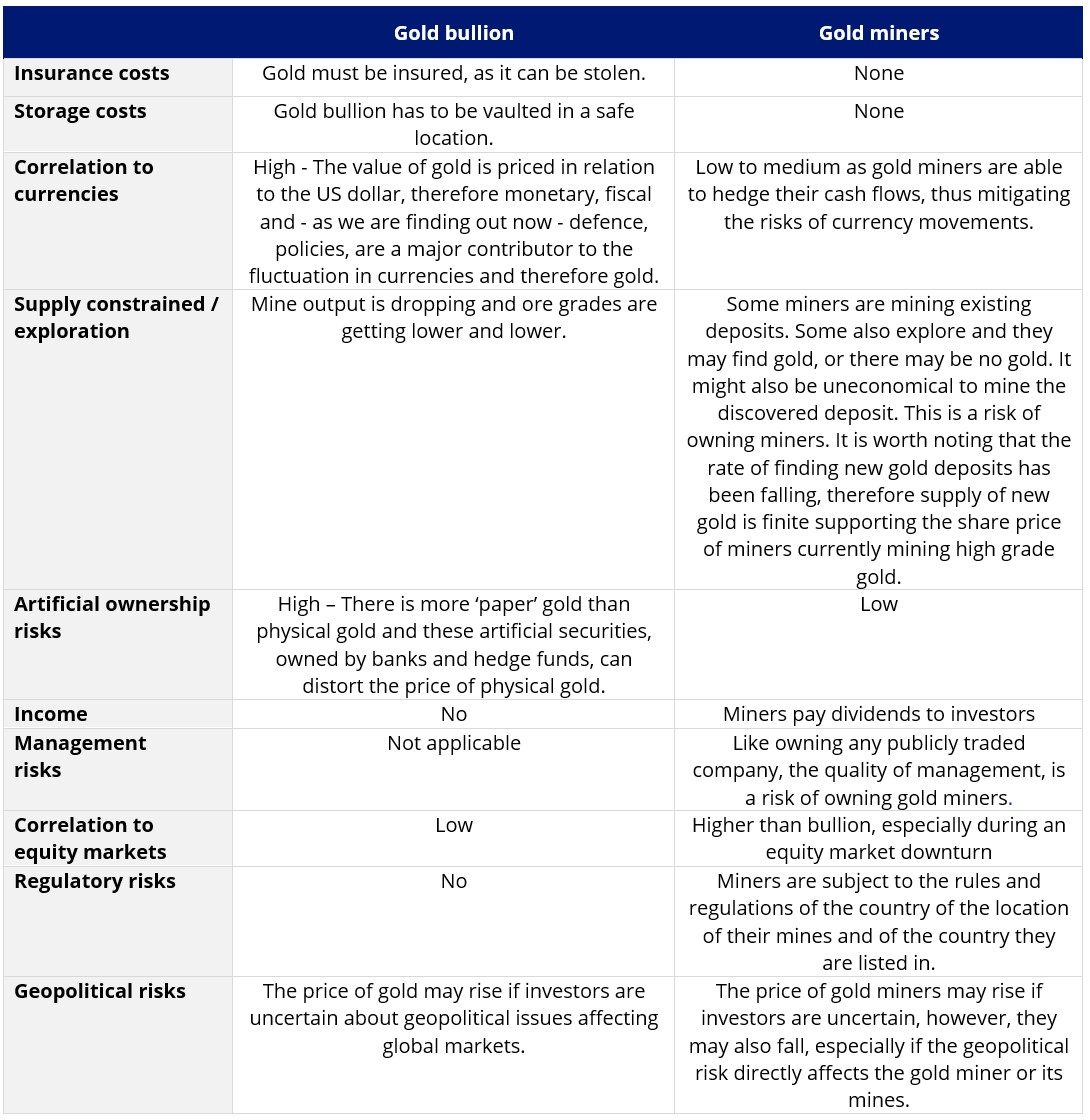
While each gold strategy has its merit for portfolio inclusion, you should assess all the risks and consider your investment objectives.
Unlock opportunities with VanEck
VanEck's investment strategies are designed to give you unequalled access to markets, sectors and intelligent investment ideas. Find out more.
3 topics
3 stocks mentioned
2 funds mentioned

